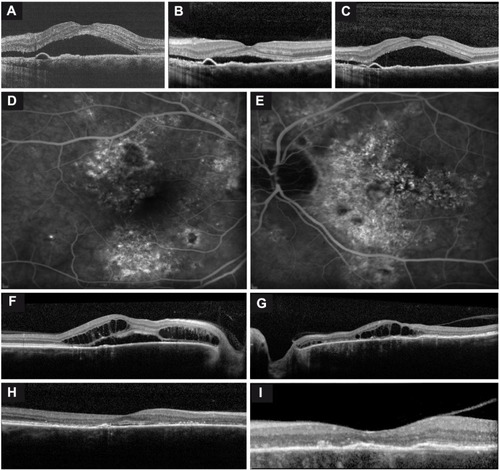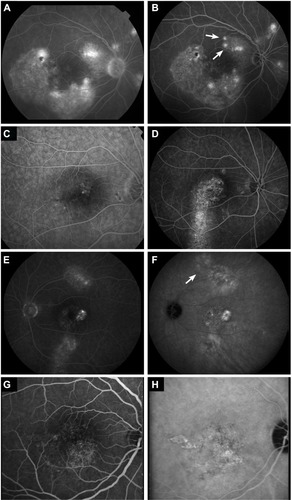Figures & data
Table 1 Demographics of the study population
Figure 1 Imaging of two chronic central serous chorioretinopathy (cCSC) patients.

Table 2 Overview of findings on optical coherence tomography and fluorescein angiography
Figure 2 Abnormalities on fluorescein angiography (FA), indocyanine green angiography (ICGA), and fundus autofluorescence in chronic central serous chorioretinopathy.

Table 3 VFQ-39 questionnaire scores of the study population and controls, and Pearson’s correlation with last visual acuity
